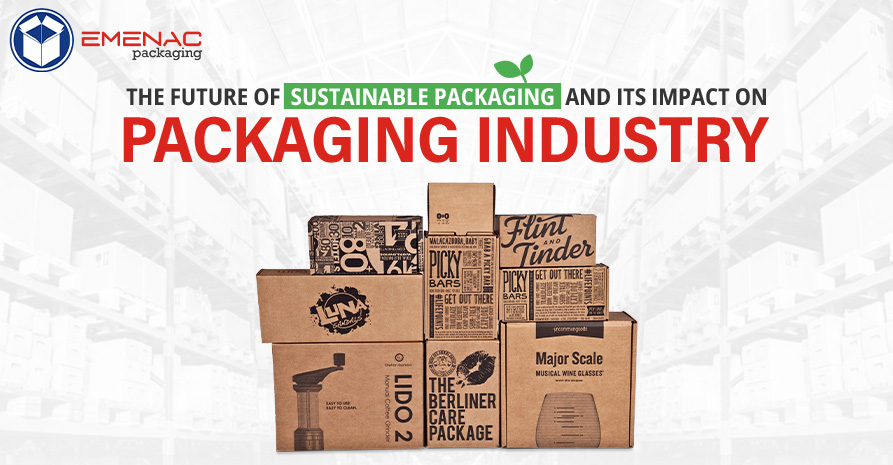The Future of Sustainable Packaging and Its Impact on Packaging Industry

Sustainability in packaging is the use of environmentally friendly materials that is recyclable or biodegradable, meaning that it will decompose and return to its natural state when it is no longer needed.
The value of the global sustainable packaging market is anticipated to increase from $258 billion in 2020 to more than $385 billion in 2028, according to a recent report on sustainability (Source). Read more to know about the impact of sustainability on the packaging industry and latest trends in the packaging.
What is the Future of Sustainable Packaging?
Sustainable packaging will surely have a prominent place in the future since climate change has an impact on the environment. Businesses are looking into alternatives to non-renewable resources for packing materials, like plant-based or biodegradable materials that use less energy and can be recycled or disposed of in an Eco-friendly manner.
Innovative approaches to improve the aesthetics and economics of sustainable packaging are now under development. Significant advancements in paper packaging, cardboard packaging, and bioplastics are things businesses are looking forward to.
Biodegradable Packaging
Biodegradable packaging is a type of packaging which can naturally decompose. This type of packaging has been becoming more popular for businesses, because of increase in the demand of sustainable packaging.
The biodegradable packaging market was evaluated at $4.65 billion in 2019 and is expected to increase at the annual rate of 17.04% by 2025, reaching up to $12.06 million.
Flexible Packaging
Flexible packaging offers many packaging options according to the product requirement and offers a benefit of enhancing company branding and can be printed easily. This packaging offers customers a convenient packaging alternative which can easily be recyclable.
Sustainable Packaging Material
Sustainable packaging materials lessen the environmental effects of their manufacturing and disposal while providing better levels of protection and convenience than conventional packaging alternatives.
Apart from biodegradable or compostable alternatives, there exist other Eco-friendly options like recycling, reusing, and flexible packaging that can together help us attain a more sustainable future for our world.
Businesses requirement for environmentally friendly product packaging can be fulfilled by using sustainable packaging materials. Their design aims to minimize environmental effect, improve product safety, and avoid waste, making them a crucial component of sustainable production.
High Demand for Sustainable Packaging Design
Effective Eco-design makes use of sustainable resources. This calls for an emphasis on material recovery and sourcing in addition to design for sustainable packaging. Here are some designs which the businesses can follow;
- Using recycled paper to make protective sleeves for fragile products instead of plastic bubble wrap
- Thermo-insulating protective foam composed of paper and plant starch
- Biodegradable container that binds wood chips with mushrooms
Nowadays, every aspect of the business world that involves packaging is driven by the need for sustainability. There’s mounting evidence that achieving environmental goals and driving profitability go hand in hand with a sustainable approach.
In Summary,
Adopting sustainable packaging involves the drive that lessens environmental impact, promotes a circular economy, and encourages responsible consumption in addition to meeting consumer demand and safeguarding the environment for future generations.
The packaging industry is expected to grow over 18% by 2027, due to rising consumer demand for plastic alternative packaging, such as fibre-based packaging (FBP). This presents the industry with a huge opportunity to innovate and transform the market.
Share This



